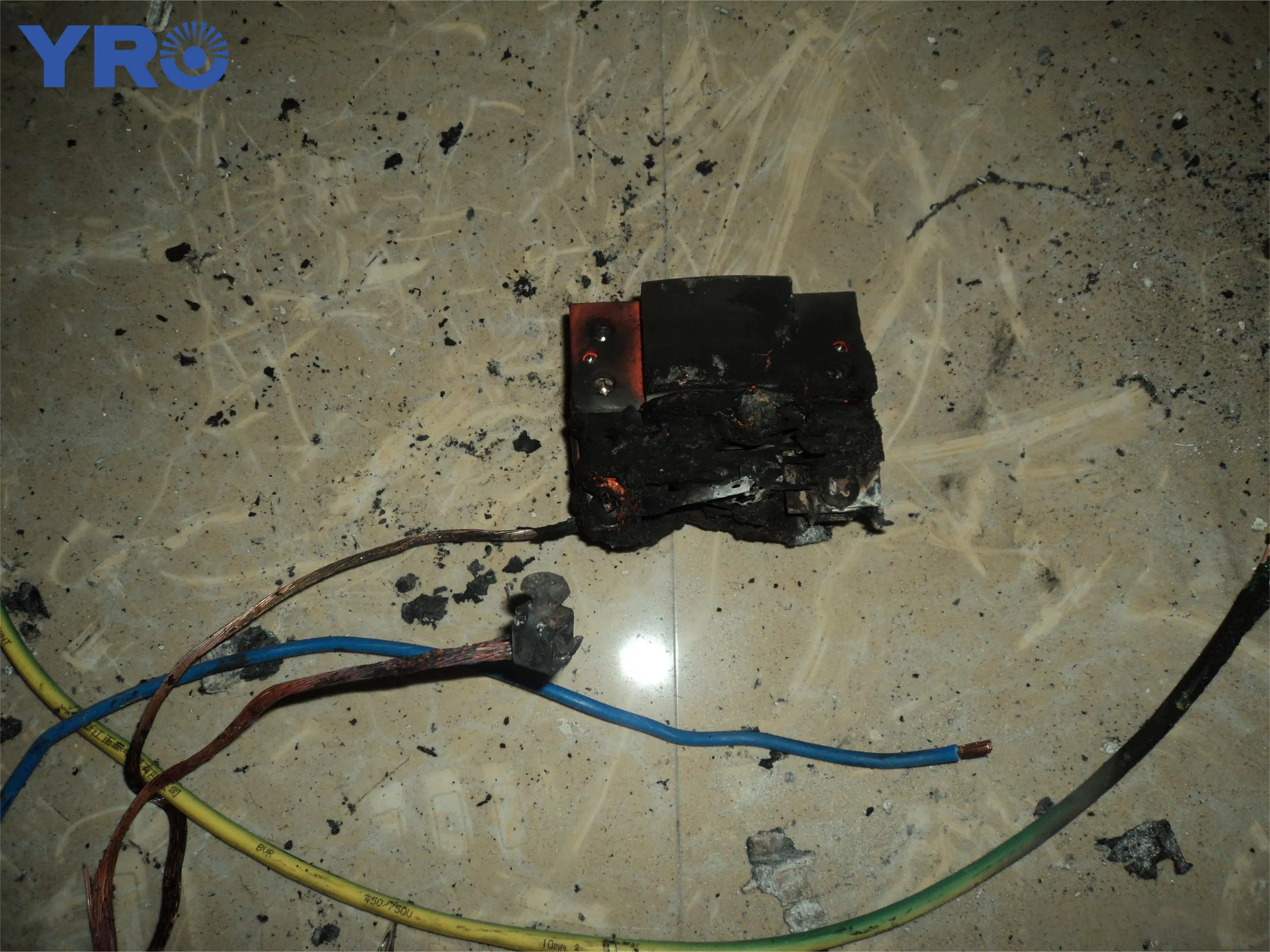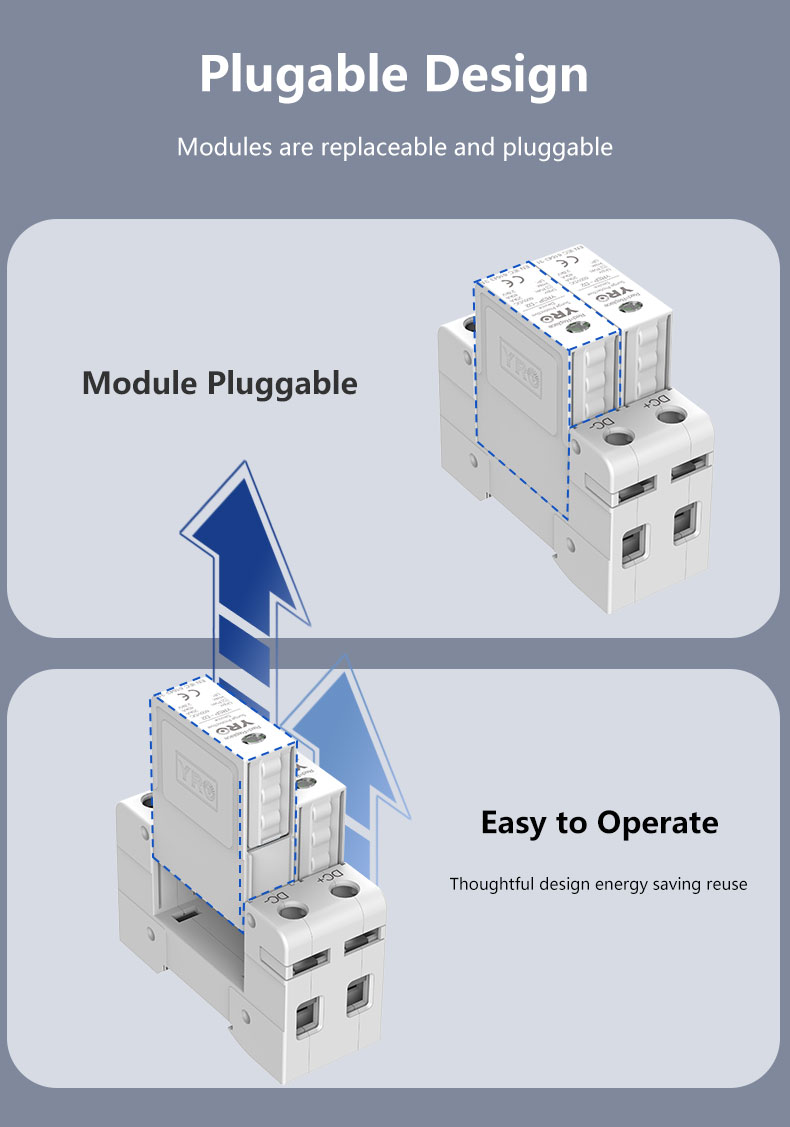What Should You Do When Your Lightning Arrester Fails?
2025-06-20
From computers to HVAC systems, our electronics rely on transient voltage suppressors for safety. But what happens when this critical protection fails? Understanding warning signs and consequences is crucial for protecting valuable electronics.
How Long Is the Service Life of a Lightning Protection Device?
Most surge suppressors last 3-5 years, but lifespan depends on usage environment. These devices don't fail suddenly; protection degrades gradually over time.
Inside each electric transient voltage suppressor, metal oxide varistors (MOVs) act as sacrificial components. Each time they absorb a surge, the MOVs degrade slightly. After multiple surges, their protection capacity drops to zero.
In storm-prone areas or locations with frequent power fluctuations, an SPD lifespan shortens significantly. This makes regular inspection essential.

Warning Signs of Failure
1. Dark Indicator Light
Protection lights extinguish while power continues flowing. This signals complete protection failure.
2. Burning Smell or Discoloration
Plastic odors or casing discoloration indicate overheating components, often from MOV degradation.
3. Overheating or Strange Odors
Warmth, pungent smells, or smoke require immediate power disconnection.
4. Unusual Sounds
Buzzing or crackling noises signal potential failure risks.
5. Device Malfunctions
Random restarts or power loss may indicate a failing lightning arrester.

What Potential Risks Will a Failed transient voltage suppressor Pose to the Electrical System?
- Complete Protection Loss
Electronics become fully vulnerable to the next power surge, risking simultaneous damage to all connected devices.
- Equipment Damage
Surges exceeding equipment ratings can destroy internal components like chips and transistors.
- Fire Hazard
Severely degraded MOVs may overheat, potentially igniting surrounding materials.
How to Check Your Transient Voltage Suppresso?
While most surge suppressors have indicator lights, regular manual checks are essential:
Transient Voltage Suppresso Health Checklist
• Visual inspection: Check for damage, discoloration, or bent prongs
• Light test: Confirm protection indicator functions
• Age verification: Note manufacturing date on casing
• Post-event check: Inspect after significant power incidents
When to Replace Your Transient Voltage Suppressor?
Don't wait for failure signs. Proactive replacement is the best strategy:
Replacement triggers: Immediately replace after major surges, with any warning signs, or at 3-5 years. A quality SPD prevents costly damage.

Choosing a Replacement
Select your next electric surge suppressor using these criteria:
1. Response Time (tA) : The time from when a lightning arrester detects overvoltage to when the protection mechanism is activated. The ideal response time should be less than 1 ns, to ensure protection is provided before the current rises sharply. However, the reality is that, the response time of most transient voltage suppressors on the market is generally between 24 and 25 nanoseconds. Therefore, if the application scenario has extremely high requirements for response speed, then a 1ns-level SPD from a high-end brand should be specifically selected and the higher cost should be accepted. If the response speed is not very high, a regular SPD will do.
2. Nominal voltage (Un) : The rated voltage of the lightning arrester should match the voltage of the protected system to ensure its normal operation.
3. Current handling capacity (In/Imax) : The maximum inrush current that a lightning arrester can withstand, usually expressed in kA. For home use, it is recommended to choose 20kA-40kA, and for industrial use, 40kA-100kA.
4. Warranty Policy: Choose a brand that offers long-term warranty and customer support to ensure that the equipment can be repaired or replaced in a timely manner when problems occur.
Final Recommendations
A failed transient voltage suppressor creates serious risks: your electronics become vulnerable while you assume they're protected. The solution is proactive management.
Test your protector after electrical incidents, and never ignore warning lights. Remember, surge protection manages risk rather than eliminating it. Even premium surge suppressors have limited lifespans.
By recognizing warning signs and replacing devices proactively, you transform your SPD from forgotten hardware into an active protection component. When the next surge comes, your electronics will thank you.




